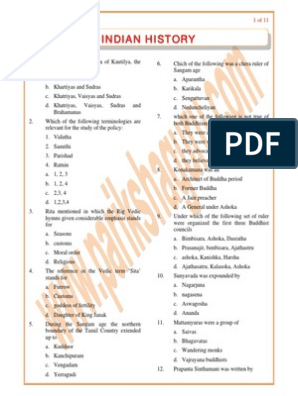0% found this document useful (0 votes)
18 views7 pagesSelfstudys Com File
This document is a sample paper for the CUET (UG) History exam, consisting of 50 questions with instructions to attempt any 40 within 45 minutes. It covers various topics related to Indian history, including the Harappan civilization, Mauryan Empire, Mughal rule, and significant historical events and figures. An answer key is provided at the end for reference.
Uploaded by
yraj68502Copyright
© © All Rights Reserved
We take content rights seriously. If you suspect this is your content, claim it here.
Available Formats
Download as PDF, TXT or read online on Scribd
0% found this document useful (0 votes)
18 views7 pagesSelfstudys Com File
This document is a sample paper for the CUET (UG) History exam, consisting of 50 questions with instructions to attempt any 40 within 45 minutes. It covers various topics related to Indian history, including the Harappan civilization, Mauryan Empire, Mughal rule, and significant historical events and figures. An answer key is provided at the end for reference.
Uploaded by
yraj68502Copyright
© © All Rights Reserved
We take content rights seriously. If you suspect this is your content, claim it here.
Available Formats
Download as PDF, TXT or read online on Scribd
/ 7






















































































